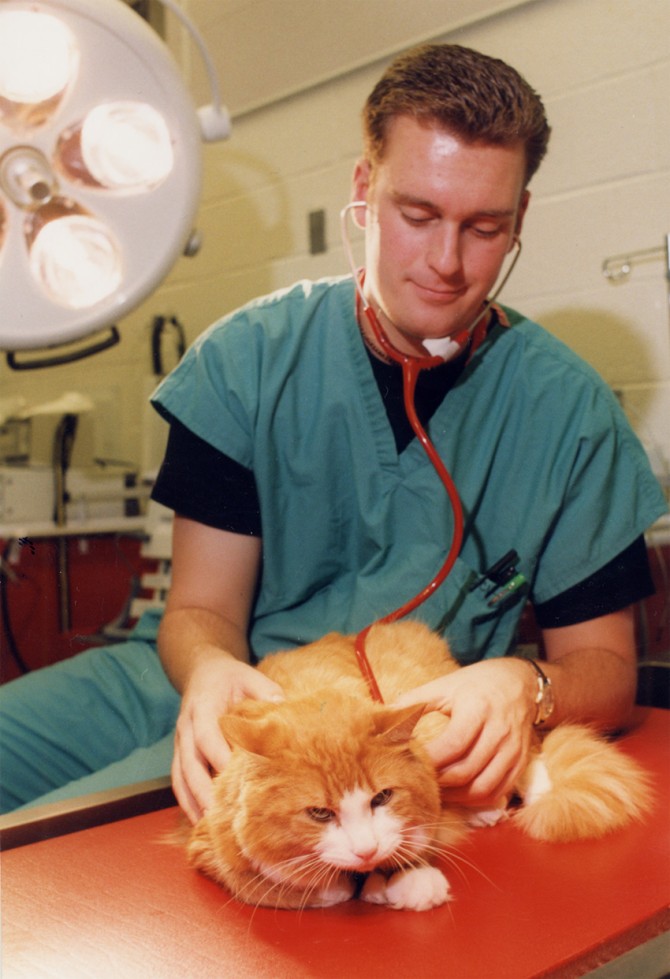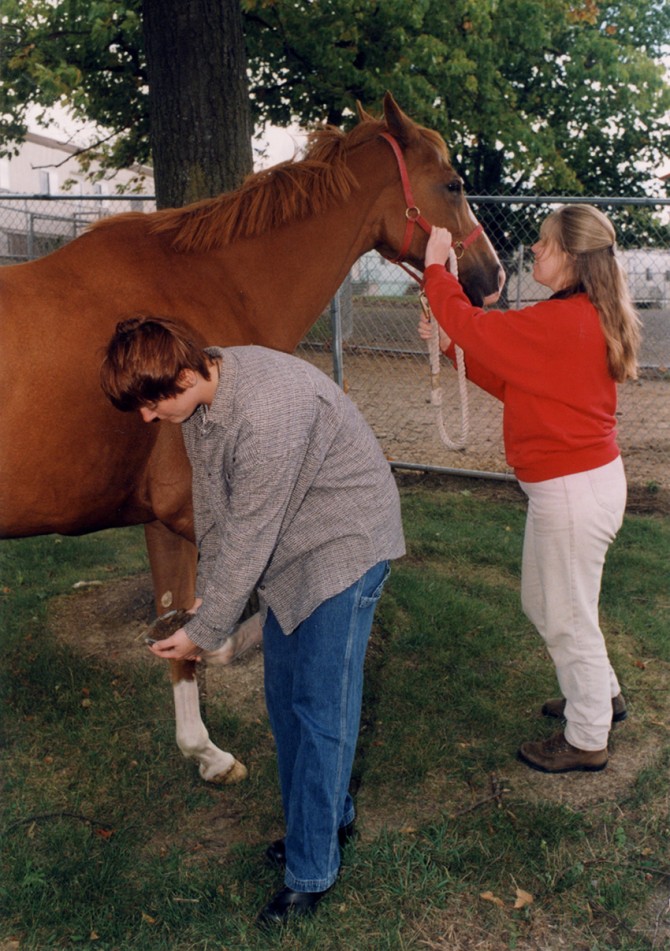Cornell Veterinary College recognizes work of veterinary technicians
By Roger Segelken
Licensed veterinary technicians (LVTs) will be in the spotlight at Cornell University's College of Veterinary Medicine during National Veterinary Technician Week, Oct. 10-16. The celebration includes educational games for children visiting the college's teaching hospital, as well as a series of lectures for veterinary students.
"Thirty-five licensed veterinary technicians work in our Companion Animal Hospital, Equine Hospital and Farm Animal Hospital," says Bonita Voiland, the college's assistant dean for hospital operations. "They are key members of the health-care team, helping provide the consistency necessary to maintain quality care for our animal patients."
According to Kim Baldwin, LVT in the college's teaching hospital, veterinary technicians at Cornell are specially trained in their areas of expertise: anesthesia, cardiology, community practice, dentistry, emergency and critical care, internal medicine, ophthalmology, radiology, surgery and ultrasound.
"As licensed veterinary technicians, we work closely with veterinarians and other members of the medical team," explains Laura Barlow, LVT in the college's teaching hospital.
All of the licensed veterinary technicians at Cornell -- and throughout the state of New York -- are required to be graduates of a program accredited by the American Veterinary Medical Association. They also must pass a national examination and become licensed in the state of New York as a technician in the field of veterinary medicine.
The field of veterinary technology began in earnest in the late 1960s. As veterinary medicine and animal health became more complex, the need arose for trained assistants who could take over the routine tasks of animal care and give veterinarians more time for clients and patients.
Today, veterinary technicians provide knowledgeable, professional care for animals. They assist both small-animal and large-animal veterinarians in private practice, institutions and university hospitals, and also work in the fields of research and diagnostics. Their duties depend on the employer and size and kind of facility where they work. Examples of their work include client communication, patient treatments, anesthesia monitoring and blood collection; they perform their tasks under the supervision of a veterinarian. They do not make diagnoses, perform surgery or prescribe medication. College of Veterinary Medicine's web site: http://www.vet.cornell.edu/.
Media Contact
Get Cornell news delivered right to your inbox.
Subscribe
